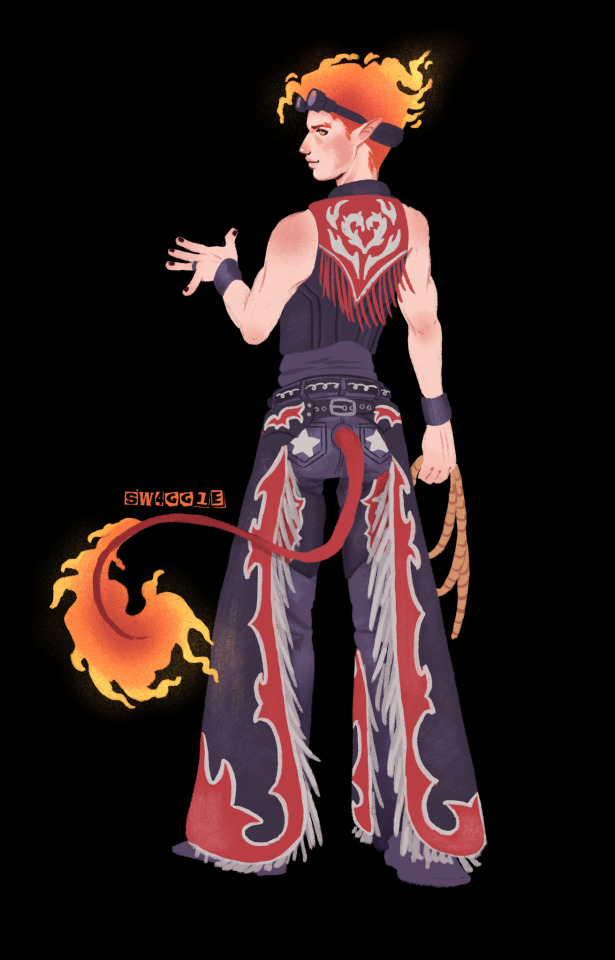}{ hi i write things }{ mostly mcyt things }{ 35 // trans-masc // queer // system // witch // disabled // he/him }{ *extremely* unwell about Jimmy Solidarity, Pearlescent Moon, and Pixlriffs}{
Don't wanna be here? Send us removal request.
Text
This one has genuinely been quite nice.
Cleo frequently has a point, at the beginning of these games, where they feel burnt out before anything has even happened. What do you mean, we have to start over on a new world where we won’t even last two months? Just the idea of having to build something to live in always seems exhausting.
Martyn took care of that, though. He sent them both on a stupid quest right away to collect what they needed to make their faces in the wall of their apparent base, and while she’d been distracted by trying to find spare pumpkins, he had built a nice little house.
Cleo wouldn’t have assumed they were sharing, but Martyn had spoken as if he hadn’t considered it any other way. He’d even made up a name for them, the Lost Generation or whatever it was he kept going on about.
He’s so weird.
Evening is just beginning to fall, the sun slowly sinking over the horizon, and Cleo is sitting atop her giant head, kicking her feet in the space still bereft of pumpkins. Martyn is beside her, uncharacteristically silent.
He’s so weird. Cleo’s been trying to get a read on him all week, but he’s been acting as if this is all totally natural. He’s actually making them doubt that they even had any sort of feud or distrust between them ever. Like, who would encourage her to build her own giant face next to his without so much as a mention of everything that’s happened?
“You’re weird,” Cleo says, after sitting quietly for far too long.
Martyn hums. “Not the first I’ve heard of it,” he says easily. “In fact, I think I’ll take it as a compliment. Thank you.”
Cleo snorts. Classic Martyn. “I didn’t expect to team with you,” they say. “Out of everyone, you were probably bottom of my list.”
“I have been wondering that,” Martyn says, and there’s the Martyn they know, pulling his knee up to shift around and face them, voice surely bright with ready-to-go quips. “Why did you stay?”
As much as they want to pretend this is all about Martyn, it really isn’t. Sure, Martyn’s been as welcoming and friendly as ever. He tends to insert himself in groups whether anyone had asked for him or not, and Cleo didn’t ask for him, but she also didn’t turn him down, so of course he thought he could stay.
Which is fine. Because he can stay. She wants him to stay.
But the question isn’t why he stayed. It’s why she stayed.
“I . . . Scott has helped me realize that I, kind of, sort things,” they say, hands awkwardly in the air. “Like, into two categories. I either hate it or love it. And once something’s in a category, I don’t much feel like changing it.”
Scott told her that, almost word-for-word. He’d said it casually, like he was commenting on something as mundane as the change of the seasons. This is how you think, Cleo, he’d said in that annoyingly superior Scott fashion. I know you.
The worst part is, he’d been right. Martyn falls into the hate category, and he has ever since he left them without a soulmate. Things locked away in that category (or people, as is becoming ever increasingly common) rarely come back out.
It’s so easy to let themself get filled with hate like that. One unintended slight can become an eternal fury, a fire that burns and burns and steals every molecule of energy from their body until they can’t go on anymore.
“I don’t like it,” they admit quietly. Martyn makes a sound of surprise.
“Really? I was just having the thought that everything all black and white sounds nice,” he says. “I feel like there are so many shades of grey, it hurts my head to try and sift through them all.”
“At least there’s dimensions to that.”
Martyn shakes his head. “It’s exhausting. I never know who I can properly, like, get on with.”
“And I never give anyone a second chance,” Cleo says drily.
“Sounds like a good system. If it ain’t broke, don’t fix it, and all that.”
Is that an invitation to leave him? Does he want them to boot him from their shared base without another thought?
They won’t. No, if the stubborn moron wants to stay, then they’ll let him stay. They promised.
Cleo sighs. “It was Scott, actually, who convinced me.”
“‘Course it was.”
“He just—” she gestures widely, trying to give shape to her frustration— “He just let Pearl back. Last time, you know? It was him and me and Impulse and Pearl, and I just didn’t get it. We hated Pearl, didn’t we? But then he pointed out that Pearl didn’t really do anything wrong in the first place, and she never did anything to me, so there wasn’t any real reason for me to be angry with her.”
“That’s true, all we did was go to the Nether,” Martyn puts in.
Cleo ignores him. “We were friends, her and I,” she says, feeling almost wistful. She really did miss Pearl at first, but it was so much easier to compartmentalize her into the hate category than it was to try and manage the conflicting feelings. “Really, now that I think of it, I just went with Scott because. . . .” “Bros before hoes?”
Cleo smacks his arm. Martyn begins to howl a “Hey!”, realizes what he’s just said, and shrugs. “Yeah,” he says. “I deserve that. Let me think, er, queers before . . . before fears? But that would imply that you’re afraid of her—”
“Because that’s just how the cards fell,” Cleo finishes firmly. “I was upset with her because Scott was, but Scott isn’t anymore, and . . . it’s weird.”
It’s so weird.
The weirdest part is that these people don’t hate her. She was so terrible to them for such a long time, but Pearl happily moved in with her and Scott and Impulse. Martyn teamed up with her without a second thought.
“Do you see yourself in Pearl?” Martyn asks, voice contemplative. Cleo’s eyebrows shoot up to their hairline.
“Bit of a personal question,” they grumble, but. . . .
Pearl holds a grudge, that’s for sure. She doesn’t dance around her feelings. It’s always driven Cleo mad, the way people like Scar and Etho are just as polite as can be, putting everyone else before them. Cleo prefers people like Pearl, people like them, who aren’t afraid to cut people off for being too much to handle.
There’s something else that Pearl is, though, that strikes truer than anything else.
Pearl is lonely. Pearl is probably the loneliest person Cleo knows, honestly, which is quite sad—but what’s even more sad is that Cleo herself is the second loneliest person she knows.
Yes, they have Scott. They have Scott, and they’ve teamed up with other people here and there, but they wouldn’t say that they trusted any of them. Not enough to properly bear their soul to them, or whatever sappy thing that people say.
Sometimes, they think it might be easier to be like Pearl. Alone and free to be open about her feelings. Emotionally connected to everything she does.
Cleo has friends, and Pearl has feelings. Strip those both away, and they’re the same.
“Yeah,” they say eventually. ‘I . . . I suppose I do.”
“Cool, then we can say queers before mirrors, that’s good,” declares Martyn. Cleo bites back a curse.
Right. This is Martyn she’s dealing with. Of course he wouldn’t ask a deep question for the purpose of being deep.
“Is that what we are?” she asks, trying to keep any sense of a sneer out of her tone. “Queers before mirrors?”
“Er, how so?”
“Ren?”
Martyn and Ren are cut from the same cloth, that’s for sure. Martyn always running away, Ren always running toward, a dog after its own tail. There’s not been a single game that it hasn’t been the two of them against the world, not when they’ve both been here.
Honestly, Cleo’s not quite sure why they haven’t properly teamed up yet. They offered, of course, but Ren had been playing his pathetic loneliness game at the time and wasn’t ready to settle down.
Martyn does the same thing. They reflect each other.
Martyn’s looking at her, Cleo realizes, rousing her from her thoughts. She glances over, finds his gaze . . . odd. Contemplative, like he’s actually thinking something through for once.
“No,” Martyn says quietly, that freaky thoughtful look still on his face. “No. I think this is the opposite. Mirrors before queers, you know?”
Cleo opens their mouth to ask what on earth he means by that, but Martyn clambers off the hill and down to their base, down to the house he’s been tirelessly working away at, leaving them alone with their thoughts and no reflection in sight.
85 notes
·
View notes
Text
cabincore is actually such a fun teamup. scott has teamed with competent people for too long. now he turns around and the house is on fire and he has no idea why
209 notes
·
View notes
Text

some bigb hairstyles 🪼🪩🫧
(psst, my commissions are open!)
1K notes
·
View notes
Text
I'm gonna be real with you, i don't think weirdo kinksters should be considered acceptable collateral damage when banks/credit card companies enforce adult content bans on sites like patreon and ko-fi
13K notes
·
View notes
Text

They only get to see each other bi-annually, forgive him
1K notes
·
View notes
Text
a secret they dont tell you is that you dont need to have a set time and place for exercise. sure going to the gym is gonna give you a more dedicated workout but like if you're physically able to you can just jog on the spot while your food is cooking. brushing your teeth? do a couple of squats. sometimes i drop to the floor and plank until my arms hurt and then go on with my day. if you live a sedentary lifestyle its better than nothing.
13K notes
·
View notes
Text
affirmations for writers: i know how to write. i have seen sentences before, and i know how to make one. i can identify up to several words and their meanings. i am not afraid of semicolons.
4K notes
·
View notes
Text
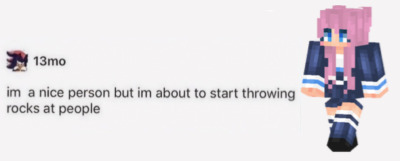

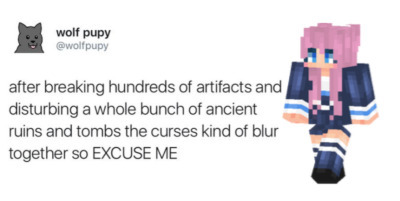
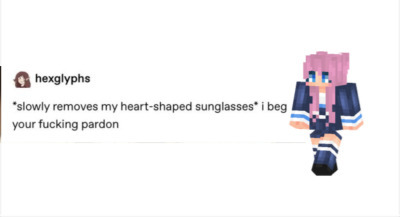





💫Since u guys liked the last 1 here’s 9 more💫
805 notes
·
View notes
Text
genuinely i think everyone would be so much happier if we simply accepted that fanfiction isn’t supposed to be realistic at all, it’s just supposed to make you happy. these freaks are currently 20k words into pining for each other while living under the same roof and working the same job, fuck realism tbh
5K notes
·
View notes
Text
life actually gets better when you leave the house consistently btw like im serious
271K notes
·
View notes
Text
Do you ever become mutuals with someone you share an intense interest with and it becomes this limbo of "I want to be your friend SO fucking bad but I'll eat a shoe before dm-ing first"
96K notes
·
View notes
Text
i keep meeting transfems whose personalities are like, gaping wounds. girls who've been stomped on over and over until they start thinking they're uniquely evil and they deserve it. people shouldn't be allowed to treat us like this.
37K notes
·
View notes
Text
Great and now there's this. Theres truly no room for an ounce of complacency this is a direct attack on queer creatives.
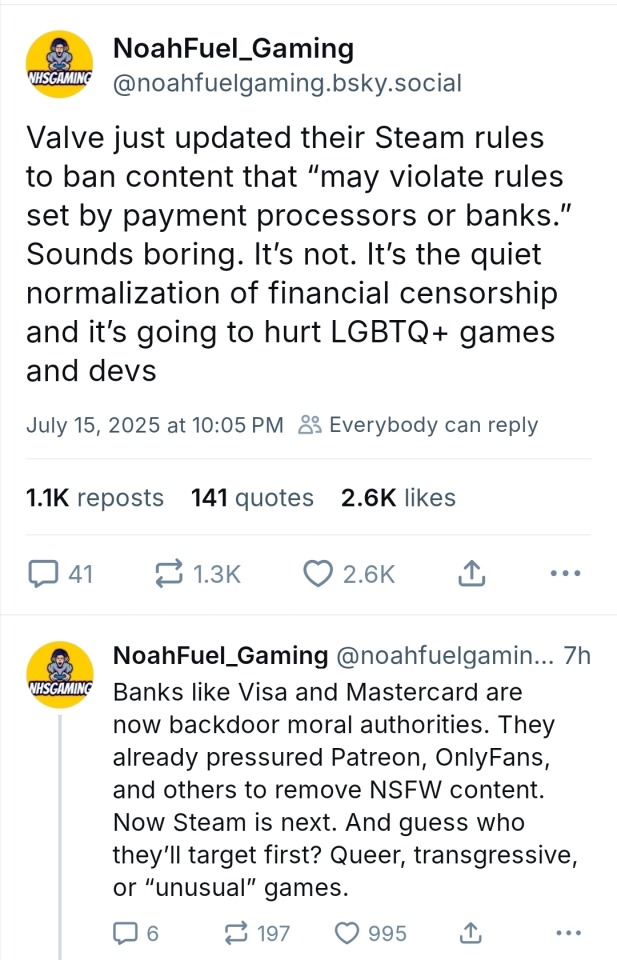
Here's a link to the whole thread for more context
32K notes
·
View notes
Text
she zydrate on my anatomy until I come in a little glass vial or whatever
40K notes
·
View notes
Photo

Long before the introduction of color film, a Russian chemist and photographer named Sergey Prokudin-Gorsky used an innovative technique. He took three individual black and white photos, each through a colored filter (red, green, and blue), to create fully colored, high-quality pictures. The photo of this woman, taken by him, is around 107 years old!
28K notes
·
View notes
